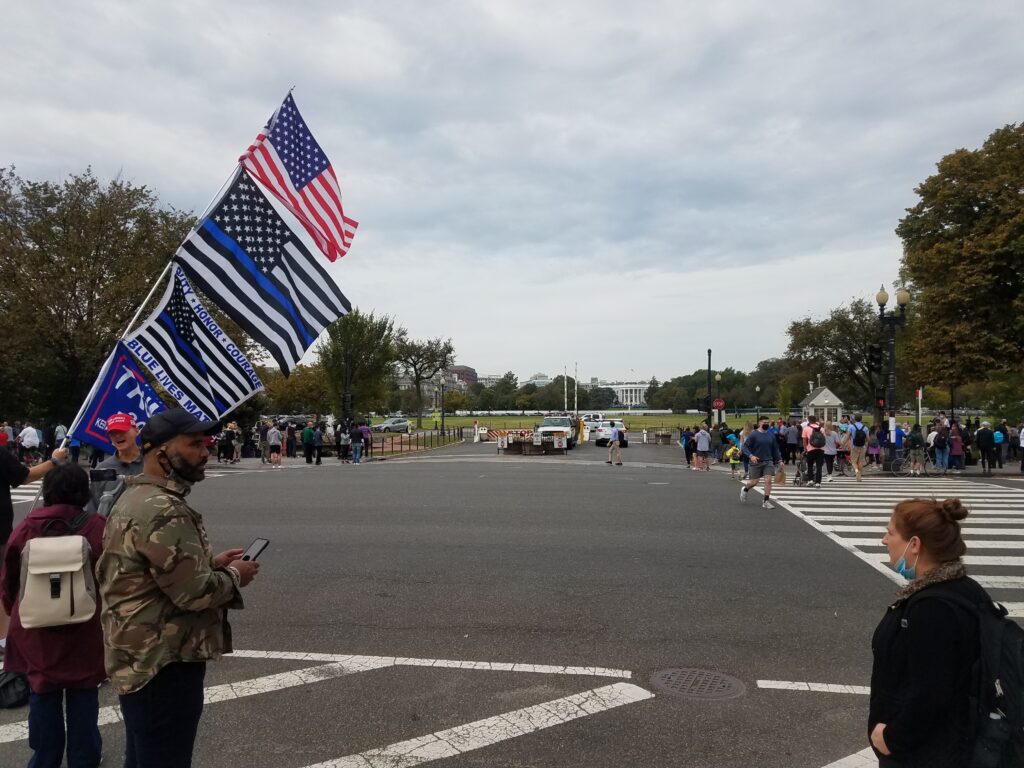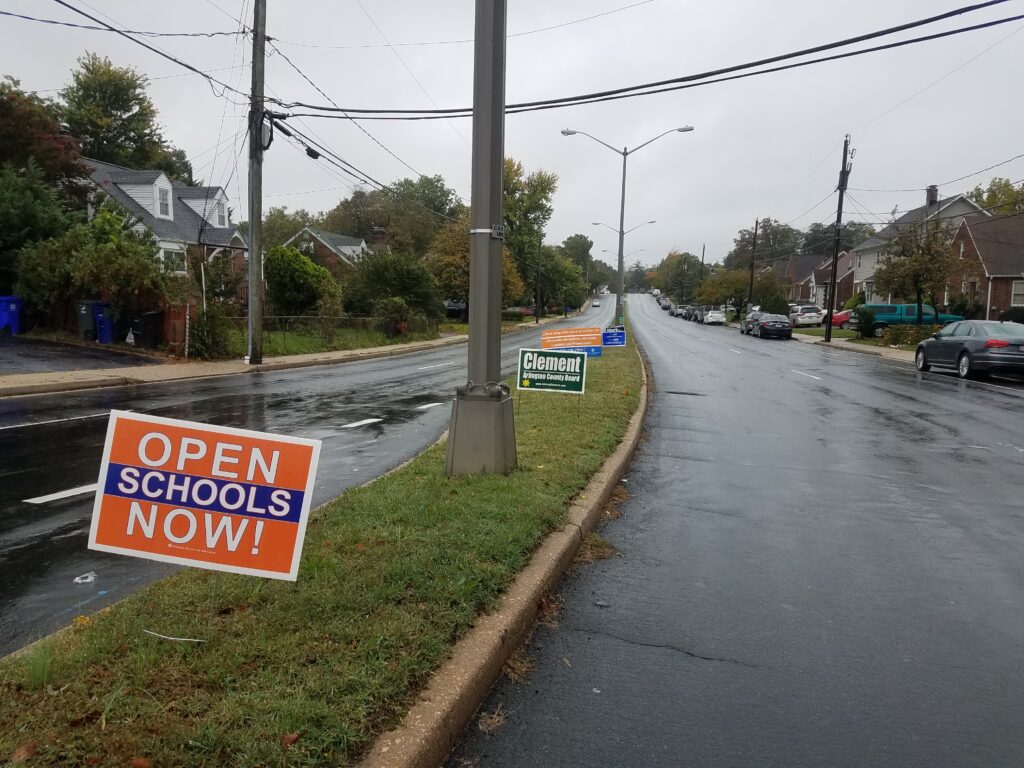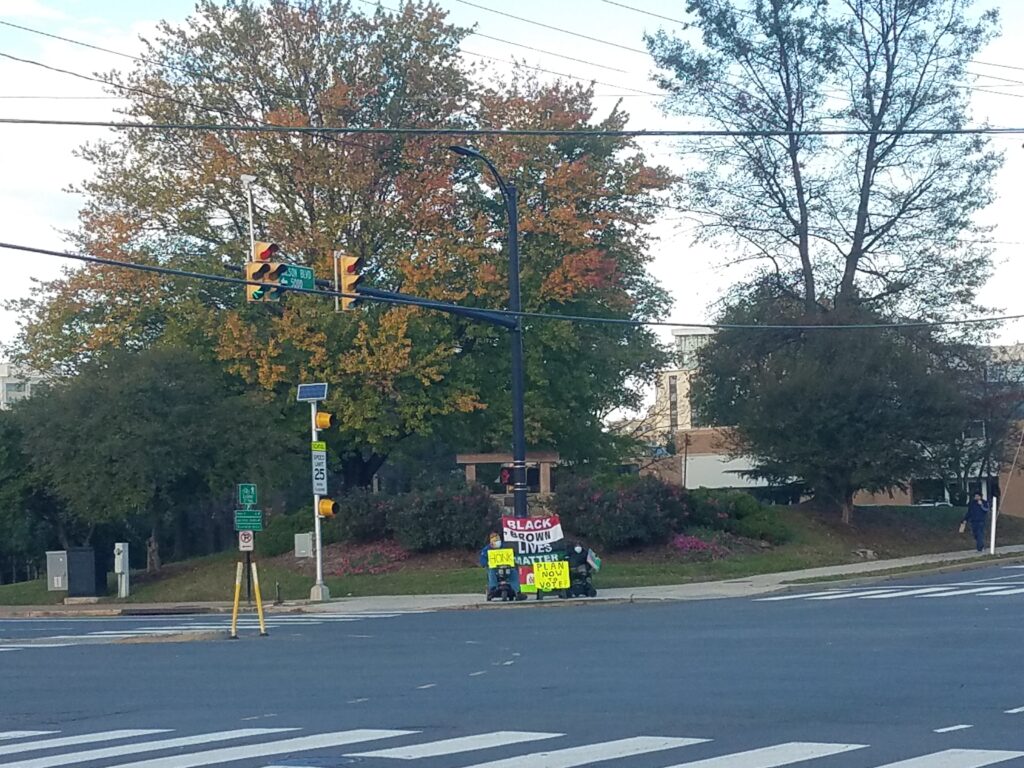Taking advantage of unseasonably good weather and clear skies, from October 25 to 28 I was hiking in western Maryland, primarily in Washington County. I did a long tour of Antietam battlefield as part of this, which is entirely within Washington County. Harpers Ferry is also part of the general battle theater, which is where I came up from. (I don’t know how many people do an all-on-foot tour of Antietam, but it can’t be many. The battlefield area is definitely car-oriented.)
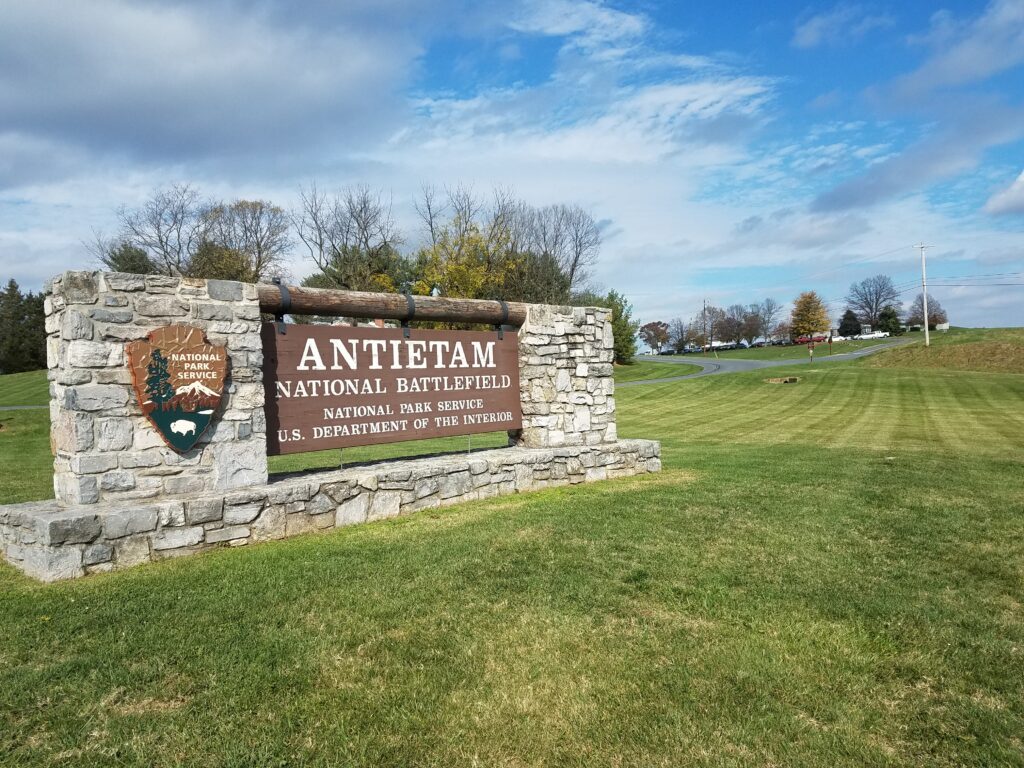
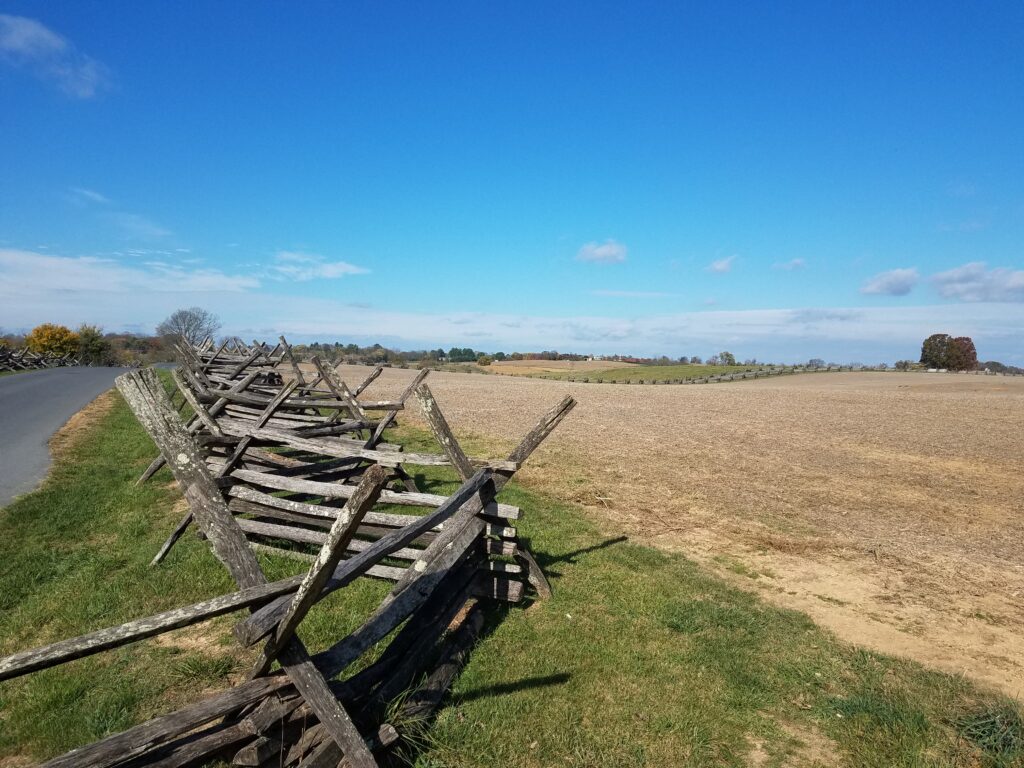
Maybe I’ll have another opportunity, another day, to write about that hike itself. I have done many such hikes and they are always liberating and you always learn a lot, regardless of what you think you know.
The most notable thing in Washington County, Md., was the overwhelming support for Trump. Granted, western Maryland is ‘red’ anyway. But Arlington is ‘blue,’ an there was a distinct lack of signs for Biden around Arlington, which I wrote about in a recent post. This is a strong contrast I was immediately hit by.
It feels like I felt ten Trump signs for every Biden sign in Washington County, which if much higher than the actual likely vote ratio.
One of the few Biden signs I saw actually included a separate sign next to it apologizing for the Biden sign:
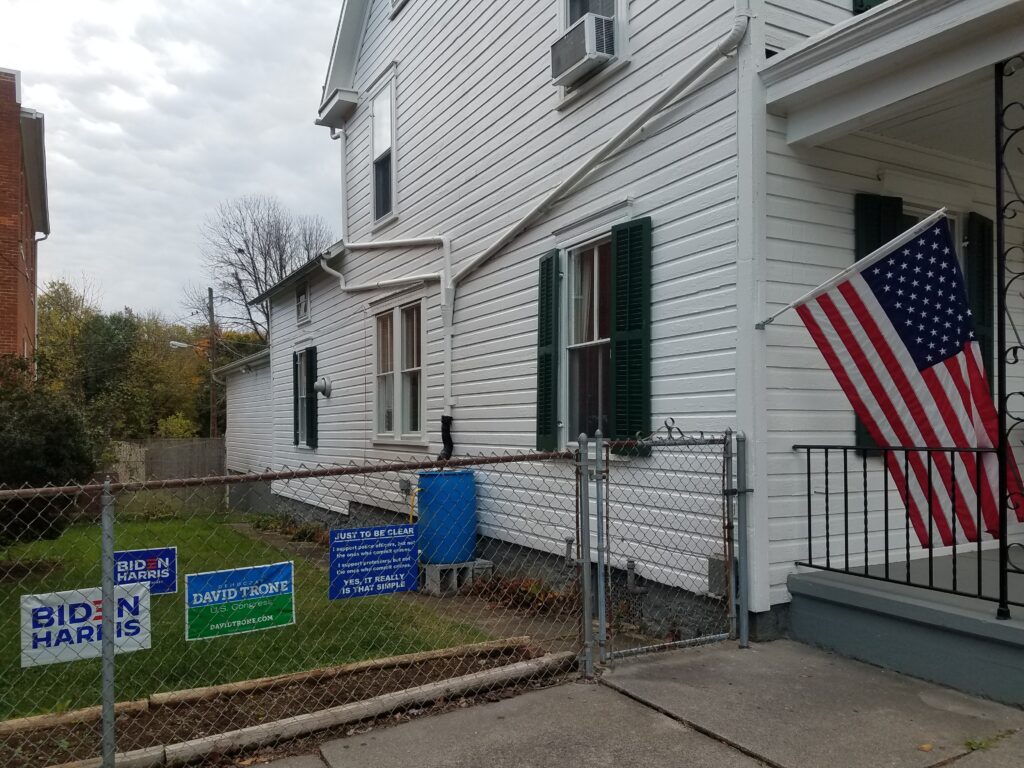
This elaborate explanatory note attached to the Biden-Harris yard sign display is something I’ve never otherwise seen. I interpret it as an apology for Biden support in this area, given the strength of Trump support.
The same is true in much of Middle America. Washington County, no doubt has people in it tied economically or otherwise to the Washington DC-centric core, but the basic population stock here is Middle America Whites, the Trump 2015-16 base.
I didn’t bother taking pictures, in part because I was trying to preserve my phone battery and in part because there were just so many houses with Trump signs. Here is one, a very large sign (see the mailbox opposite for scale):
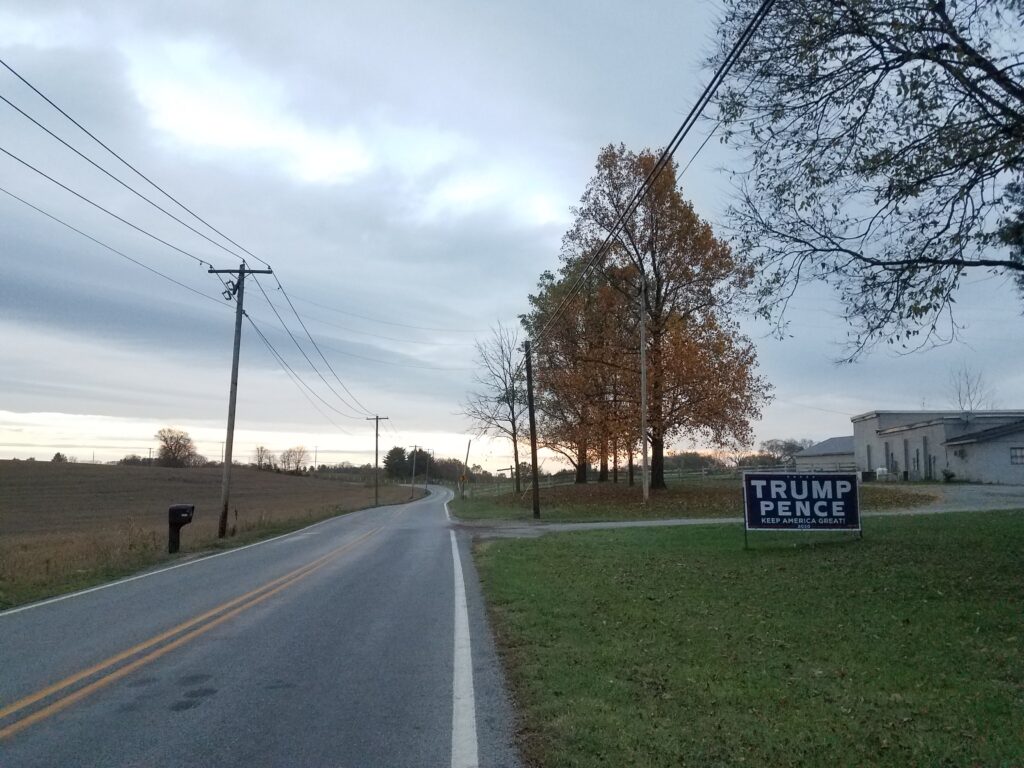
The largely rural landscape here fits with the image of core Trump supporters.
Here someone took it upon themselves to decorate a stop sign at the intersection with the Harpers Ferry Road (which dates back two centuries and featured in the battle at Antietam):
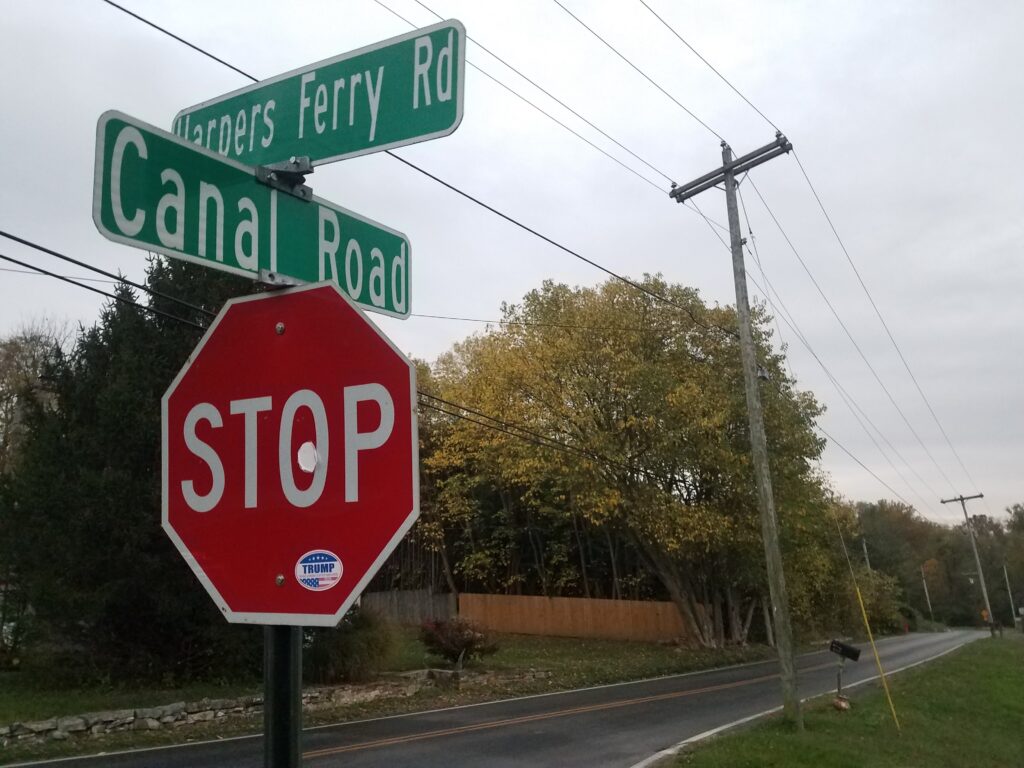
Being here a few days made me think of Iowa, my father’s home state. His home county delivered the biggest margin to Trump in Nov. 2016 than it ever gave to any presidential candidate in history. Trump is the type who tosses around words like “historic,” but in that case it really was, literally ranking number one in the modern political era. There are lots and lots of counties like this, once you step out of core metro areas, which broke much more ‘Red’ than they normally do. Deep-blue areas tended to do the opposite, which led to Hillary’s win in the popular vote.
What to make of clear and strong Trump support in western Maryland and places like it? For one thing, Maryland is a locked-up blue state. Everyone knows who’s getting its electoral votes. The fact that these people in western Maryland are so dedicated to the Trump movement, despite knowing full well they won’t swing the state, speaks to the mystique and power of MAGA many have spoken of.
If Trump wins again in most of the key states, the belt of Obama-to Trump states, Pennsylvania to Minnesota, and thus wins the election, it may be because of strongly motivated core supporters like these. I even spotted evidence of sign wars in Northern Virginia:
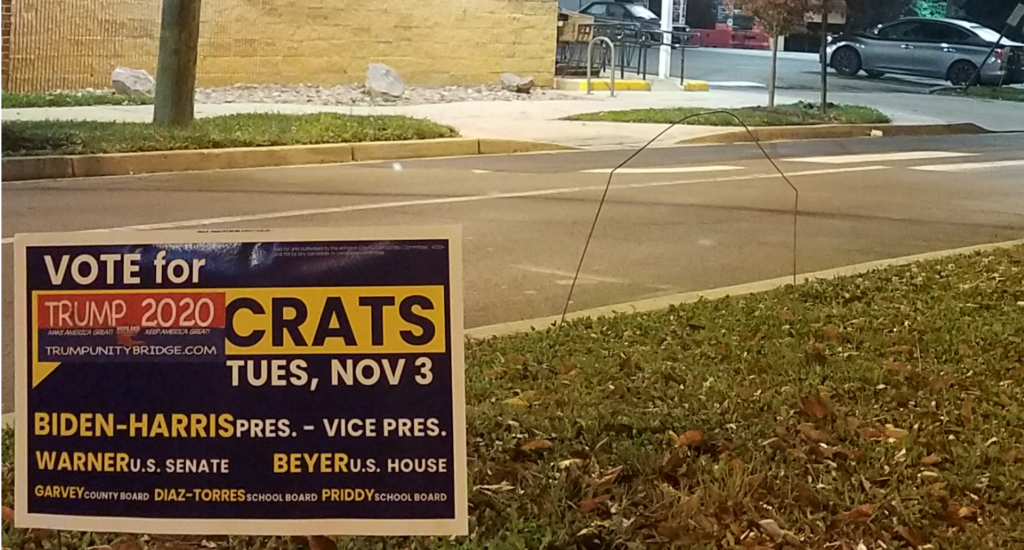
As I write this, it is just past noon on election day. There are a few more of these types of stories I wanted but I got in mostly what I wanted. There is always more to say. I’ll be in DC in the evening and till late with more stories to tell.

